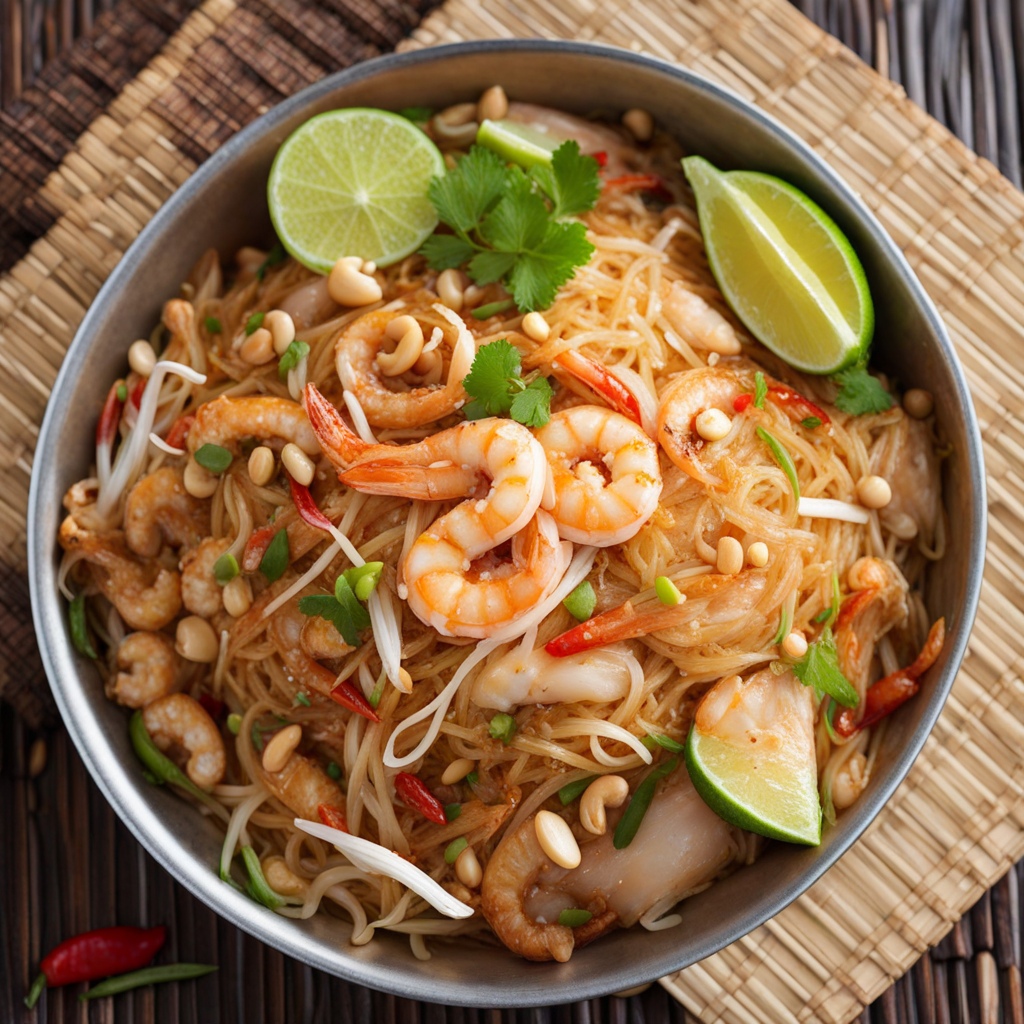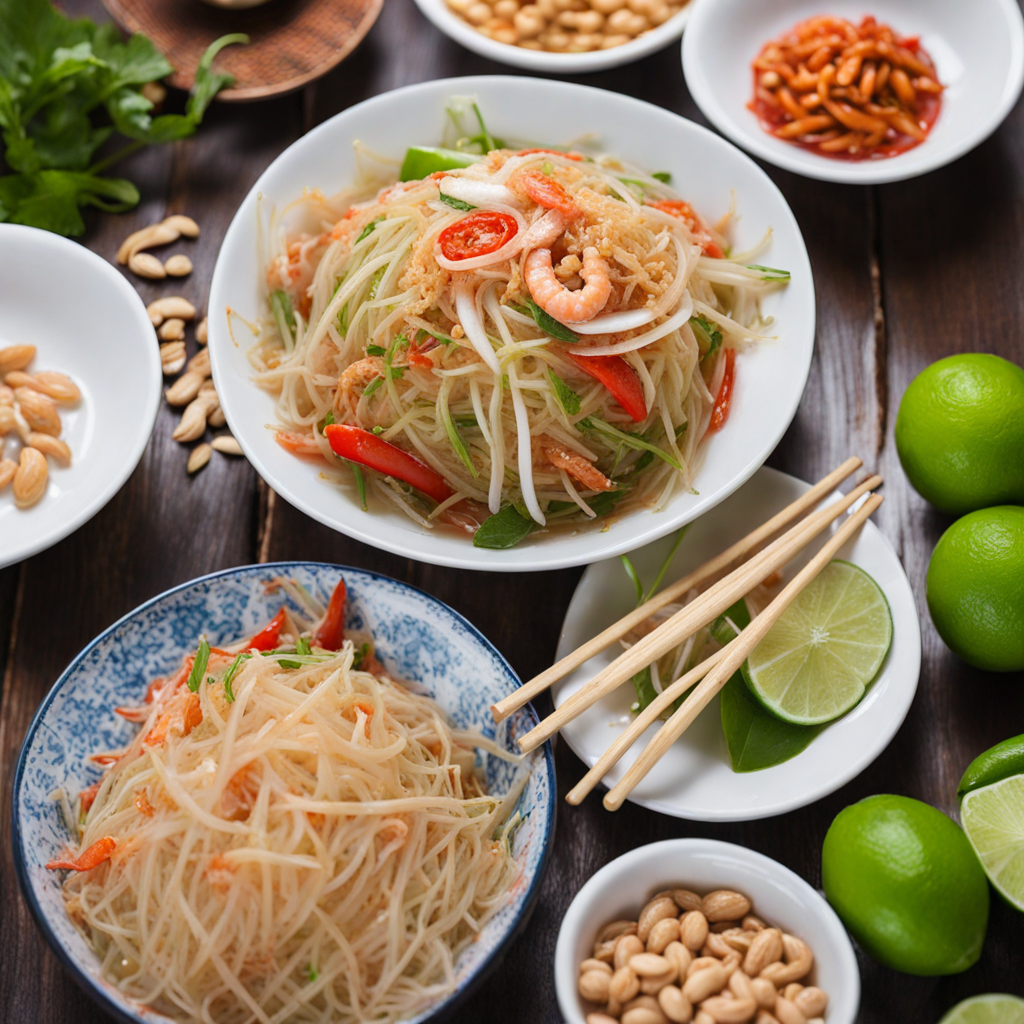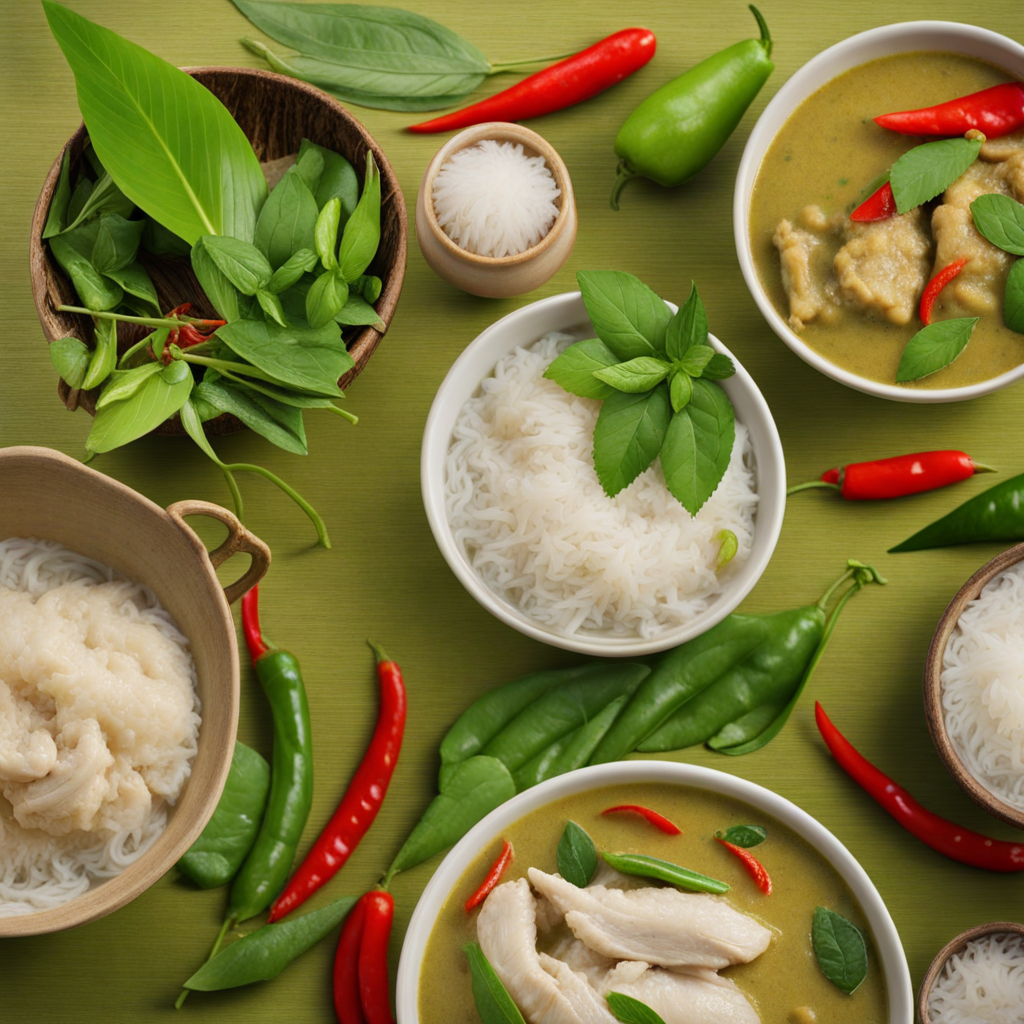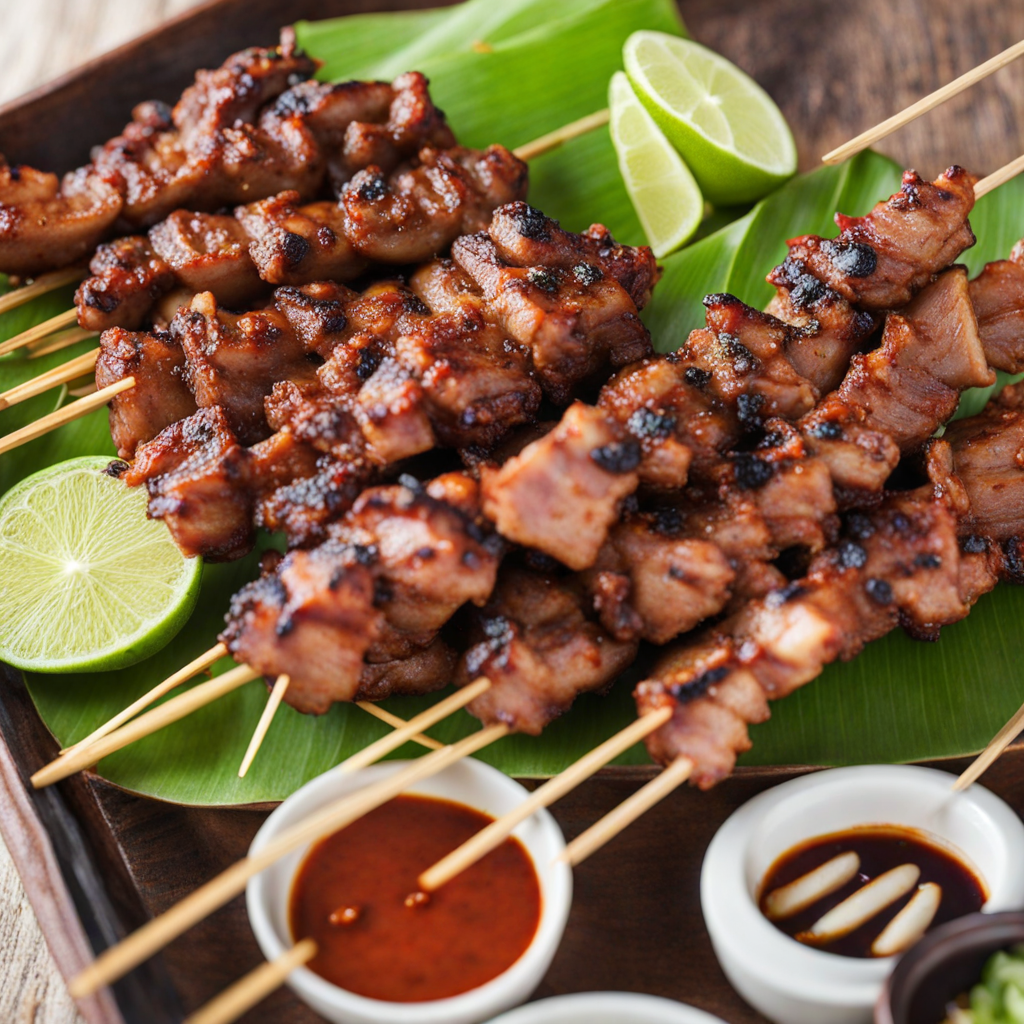Pad Thai
Pad Thai is a vibrant and flavorful stir-fried noodle dish that has become synonymous with Thai cuisine. At its core, the dish features rice noodles that are cooked to perfection, creating a chewy yet tender texture that is incredibly satisfying. The noodles are typically tossed with a medley of ingredients including fresh vegetables like bean sprouts, scallions, and sometimes carrots, adding a refreshing crunch and color to the dish. The combination of textures is complemented by the addition of protein, which can range from shrimp and chicken to tofu, allowing for a variety of options to suit different palates. What truly sets Pad Thai apart is its harmonious balance of flavors, achieved through a carefully crafted sauce made from tamarind paste, fish sauce, sugar, and lime juice. This sauce introduces a delightful tanginess with a hint of sweetness, enveloping the noodles and creating a savory depth that is both invigorating and comforting. A sprinkle of crushed peanuts adds a nutty crunch, while fresh lime wedges served on the side provide the perfect burst of acidity to brighten the dish further. As you savor each bite of Pad Thai, you will experience a culinary journey through Thailand's rich food culture. The dish is often garnished with fresh herbs such as cilantro and sometimes a sprinkle of chili flakes for those who enjoy a bit of heat. It's a quintessential street food that captures the essence of Thai cuisine, offering a delightful interplay of sweet, sour, salty, and spicy notes that will leave your taste buds craving more. Whether enjoyed from a bustling street vendor or a fine dining establishment, Pad Thai is an unforgettable experience that invites you to explore the vibrant flavors of Thailand.
How It Became This Dish
The Story of Phad Thai: A Delicious Journey through Thai History Phad Thai, a vibrant stir-fried noodle dish adorned with a mix of flavors and textures, is not just a staple of Thai cuisine but a symbol of national identity and cultural evolution. This dish, which combines rice noodles with a medley of ingredients such as shrimp, tofu, eggs, bean sprouts, and peanuts, is often served with lime and chili, showcasing the hallmark balance of sweet, sour, salty, and spicy that characterizes Thai food. While it has become a beloved dish worldwide, its history is a fascinating tale of adaptation, cultural exchange, and national pride. Origins: A Culinary Melting Pot The origins of Phad Thai can be traced back to the early 20th century, during a time of significant political and social transformation in Thailand, then known as Siam. The dish's roots are intertwined with the country’s rich history of trade and migration. Thailand's geographical position in Southeast Asia made it a crossroads for various cultures and a melting pot for culinary influences. The introduction of rice noodles can be linked to Chinese immigrants who brought their culinary traditions to the region. The use of stir-frying techniques is also attributed to Chinese cooking practices, highlighting the dish's multicultural heritage. However, it wasn't until the late 1930s that Phad Thai emerged as a distinct dish. The Thai government, under the leadership of Prime Minister Plaek Phibunsongkhram, sought to promote a sense of nationalism and unity among the people. As part of a broader campaign to modernize the country and encourage Thais to embrace their cultural identity, the government aimed to create a national dish that would reflect the essence of Thai culinary traditions. Phibunsongkhram's administration encouraged the use of local ingredients and the adoption of a standardized dish that could be easily recognized and replicated. Cultural Significance: A National Symbol Phad Thai quickly became a symbol of Thai identity, embodying the values of the nation. The government promoted it not only as a delicious meal but also as a convenient street food option that could be sold by vendors across the country. This initiative not only provided an economic boost to street vendors but also helped to popularize the dish among the populace. The affordability and accessibility of Phad Thai made it a favorite among people from all walks of life, further solidifying its status as a national dish. The composition of Phad Thai, with its combination of ingredients, reflects the Thai philosophy of balance. The interplay of flavors—sweet from palm sugar, sour from tamarind, salty from fish sauce, and spicy from chili—mirrors the broader cultural values of harmony and balance in Thai society. The dish also highlights the importance of fresh herbs and vegetables in Thai cuisine, promoting health and sustainability. In the years following its introduction, Phad Thai gained immense popularity, becoming a culinary staple in both urban and rural areas. While it was initially associated with the working class as a quick and affordable meal, its appeal transcended social classes, making it a beloved dish enjoyed across Thailand. Street vendors became synonymous with Phad Thai, serving up their unique versions of the dish to eager customers. Evolution and Globalization As Thailand entered the late 20th century, Phad Thai underwent further transformation. With the rise of tourism and globalization, the dish began to evolve in response to international palates. In the 1960s and 1970s, with the influx of foreign visitors, Phad Thai started to be adapted to suit western tastes. Variations began to emerge, incorporating different proteins and vegetables, and even reinventing the dish as a vegetarian or vegan option. This adaptability has allowed Phad Thai to maintain its relevance in a rapidly changing culinary landscape. Moreover, the dish has transcended national borders, becoming a beloved menu item in Thai restaurants worldwide. In many places, Phad Thai is now considered the quintessential Thai dish, often serving as an introduction to Thai cuisine for newcomers. This global popularity has led to a renewed interest in the traditional preparation methods and ingredients used in authentic Phad Thai, prompting chefs to revisit the dish's origins and honor its traditional roots while still experimenting with modern interpretations. The Contemporary Scene: Phad Thai Today In contemporary Thailand, Phad Thai continues to be a beloved dish, enjoyed by locals and tourists alike. While many street vendors still offer their take on the classic recipe, upscale restaurants have elevated Phad Thai to new heights, incorporating gourmet ingredients and innovative techniques. Chefs experiment with different proteins, including lobster or organic tofu, and present the dish with artistic flair, showcasing the versatility of this iconic meal. Social media has also played a significant role in the resurgence of interest in Phad Thai. Platforms like Instagram have enabled food enthusiasts to share their experiences, creating a vibrant online community centered around the appreciation of Thai cuisine. This has led to a renewed focus on the cultural significance of Phad Thai, with chefs and home cooks alike celebrating the dish's rich history and diverse flavors. Conclusion: A Dish of Resilience and Pride Phad Thai is far more than a simple noodle dish; it is a testament to Thailand's dynamic history and cultural identity. From its origins in the streets of Bangkok to its status as a global culinary icon, Phad Thai embodies the resilience and adaptability of Thai cuisine. It reflects the country’s ability to embrace change while honoring tradition, making it a dish that resonates with people from all walks of life. As Phad Thai continues to evolve and inspire new generations, its story serves as a reminder of the power of food to transcend borders and bring people together. Whether enjoyed on the bustling streets of Thailand or in a cozy restaurant halfway across the world, Phad Thai remains a delicious bridge connecting past and present, tradition and innovation, and cultures near and far.
You may like
Discover local flavors from Thailand







